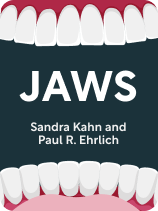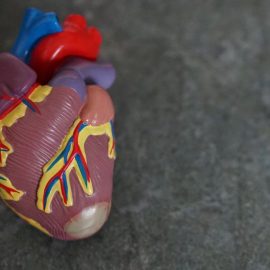

This article is an excerpt from the Shortform book guide to "Jaws" by Sandra Kahn and Paul R. Ehrlich. Shortform has the world's best summaries and analyses of books you should be reading.
Like this article? Sign up for a free trial here.
How can mouth breathing jeopardize your oral health? How common is mouth breathing?
The consequences of mouth breathing can go way beyond bad breath, according to the book Jaws by Orthodontist Sandra Kahn and ecologist Paul R. Ehrlich. They explain that mouth breathing can contribute to deformed jaws, gum disease, tooth decay, and more.
Keep reading to learn why you should breathe through your nose, if you can.
Why Mouth Breathing Is a Problem
Although they don’t give it as much weight as modern soft diets, Kahn and Ehrlich say that the consequences of mouth breathing shouldn’t be overlooked, and can contribute to deformed jaws.
The authors explain that the tongue is supposed to act as a support for the palate and upper jaw. However, breathing through your mouth forces you to move your tongue away from the roof of your mouth so the air can pass through. Over time, especially in young children, this lack of support causes the upper jaw to sag and become narrower.
Mouth breathing also jeopardizes your oral health by drying out your mouth. Saliva plays an important role in neutralizing acids and flushing away bacteria. Therefore, if your mouth is chronically dry, you’re at increased risk of gum disease, tooth decay, and halitosis (bad breath).
(Shortform note: The bacteria living in our mouths can cause health problems beyond gum disease and tooth decay. Some researchers say that our bodies recognize these bacteria as harmful and fight against them, meaning that our immune systems are under constant strain. That strain leads to health issues that may have nothing to do with the mouth, such as diabetes and heart disease. Therefore, adjusting our diets to minimize sugar and carbs can have great benefits for overall health, not just oral health.)
Kahn and Ehrlich add that mouth breathing is especially common today because children spend much of their time in school: a closed environment with many other children where mild illnesses like colds spread easily. A child with a stuffy nose (as from a cold) will probably resort to breathing through their mouth just because it’s easier and more comfortable, and over time it becomes a habit that can last well into adulthood.
Why Children Breathe Through Their Mouths
In addition to closed school environments, children may breathe through their mouths for a number of different reasons. Identifying the root cause is important in order to address mouth breathing appropriately. Open mouth breathing in children is often caused by an obstruction in the nasal passage, such as a deviated septum, enlarged tissues or bones, or tongue tie. However, if nasal breathing is unobstructed, mouth breathing may be due to problems with the bite and mouth structure preventing proper closure of the lips. The shape of the jaw can also contribute to the inability to keep the mouth closed and necessitate mouth breathing instead. In cases where children sleep with an open mouth but nasally breathe while awake, the issue likely stems from an upper airway blockage in the throat or nasal area rather than a problem with mouth structure itself.
Jaw Problems Are Now Common All Around the World
Kahn and Ehrlich explain that having an underdeveloped jaw is now much more common than people realize, thanks to modern dietary habits. They cite a few statistics to illustrate the scope of the problem:
- A survey from the late 1990s showed that well over half of the US population needed some form of orthodontic treatment (such as braces, tooth extractions, or oral surgery).
- A study from 2007 found that almost two-thirds of people in Sweden needed orthodontic treatments.
- In a lecture at the Ancestral Health Symposium at Harvard University, one orthodontist said that 95% of people on Earth have misaligned teeth, with around 30% having misalignments severe enough to justify orthodontic treatments.
Clearly, this is not a rare or isolated problem: If the Harvard researcher is correct, it’s affecting billions of people today. In short, people all around the world are suffering from underdeveloped jaws, especially in developed countries where soft, highly processed food is the norm.
| Further Statistics on Misaligned Teeth The World Health Organization (WHO) considers misaligned teeth and jaws (malocclusion) one of the most significant oral health issues affecting the world today. After analyzing 14 studies, researchers found that Class 1 malocclusion—where the upper and lower teeth fit together, but individual teeth are misaligned in some way—was the most common. This type of misalignment affected anywhere from 35% to 94% of people, depending on geographical area and age group. Class 2 malocclusion (overbite) was the next most frequent, with an average rate of 20% across all studies. Class 3 (underbite) was the least common type of malocclusion, affecting about 7% of people across all 14 studies. Crowding of teeth was also very prevalent, affecting up to 84% of people in some populations. Excess spacing between teeth was also common, seen in up to 60% of people. |

———End of Preview———
Like what you just read? Read the rest of the world's best book summary and analysis of Sandra Kahn and Paul R. Ehrlich's "Jaws" at Shortform.
Here's what you'll find in our full Jaws summary:
- How our modern lifestyle has created a hidden epidemic of jaw deformities
- How a decrease in average jaw size is contributing to health problems
- Three ways to prevent or correct jaw deformities






